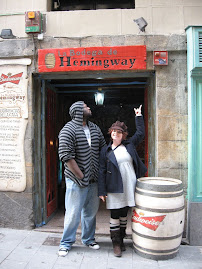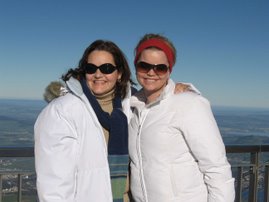"The historical matrix of events, knowledge, and professional identities that emerged out of the end of the nineteenth century set the stage for the creation and expansion of twentieth-century psychiatry, and ultimately provided the conditions of possibility for autism to emerge as a diagnostic category" (Nadesan 53). Could help also explain how autism of late 20th century part of historical matrix...
part of that "matrix": "formalization of compulsory education and the creation of the child guidance movement" (Nadesan 53)
Section of dissertation: identifying autism from 1960's and especially 1990's... Part of the conditions that enabled the definition of autism in early 20th century: "identification of childhood as a discrete phase of life," "emergence of pediatric medicine, child psychology and psychiatry," and "creation of new ways of thinking about childhood 'deviance'" (Nadesan 54).
Locke's view of the tabla rasa changes how children viewed in regard to infant's psyche... (Nadesan 54). "Between the seventeenth and eighteenth centuries, the belief that children were innocent and spiritually pure replaced the idea of children as bearers of original sin" (Nadesan 56).
"Rousseau's Emile (1762) articulated a stage-based developmental model of childhood, which borrowed from the empiricists an emphasis on (sensory) experience in the acquisition of knowledge" (Nadesan 56).
Until around age 12, children are believed to be "primarily pre-social in orientation and that knowledge is best acquired through their empirical involvement in the natural world" (Nadesan 57). Interesting that Beddleheim moves this age up to conception...
"Accordingly, the proper goal of childrearing in the socialization mode was to produce a mannered, rational adult through careful surveillance and deliberate intervention" (Nadesan 58).
"the expansion of state authority to include governance over (publicly funded) childhood education and the expansion of professional interest in childhood were expressions of new forms of social control that began in the seventeenth century but found full expression in the late nineteenth and early twentieth centuries. These new forms of control involved new methods of observing and governing populations that gradually transformed monarchical systems of governance into professional and bureaucratic ones" (Nadesan 60). As I was reading this section and thinking about why the increased awareness in autism flourish in the 1960's following Beddleheim's work and again in the 1990's following Aspergers publication, I'm also thinking how much LBJ's "War on Poverty" with the development of Head Start and Medicaide programs influenced the diagnosis of autism...
I'm reminded of this again when Nadesan notes (about the early 20th century)--taken from an 1897 text: "It is now conceded on all sides that, if we would make social progress and strengthen the foundations of good government, into the minds of this unfortunate class must be instilled principles of morality, thrift, industry, and self-reliance" (from Preston and Haines, Nadesan 61).
"Vast numbers of mobile, poor, and uneducated people who worked infrequently, according to the whims of industry or the whims of personal inclination, threatened state stability" (Nadesan 62).
Government programs, like those initiated in the early 20th century in America and Europe were "'philanthropic' in that they served a purpose in the longterm rehabilitation of the family and, simultaneously, facilitated state, economic, and social security" (Nadesan 62).
Throughout the 19th century, "government and professional efforts to monitor, divide, and sequester children expanded" (Nadesan 62).
the medical model that has prevailed encourages a "disease based metaphor' that enhanced 'anxiety' and the 'threat of contagion" (Nadesan 64).
"The social anxiety and threat that the feebleminded (and mad) posed stemmed from beliefs about their morally unfettered reproduction, the lack of economic self-sufficiency, and their purported susceptibility to criminal exploitation due to lack of moral judgment" (Nadesan 64, also discussed in Trent 16).
"the new emphasis [in the late 19th and early 20th centuries] on 'normal' childhood development did not preclude investigation into 'deviant' behavioral or cognitive development. In fact, quite the opposite was true. The emphasis on 'normality' functioned to delineate 'abnormality' as never before" (Nadesan 67).
"The new classes of child experts--pediatricians, child psychologists, and child psychiatrists--played an active role in the creation and dissemination of professional knowledge about normal and abnormal stages and processes of child development" (Nadesan 69).
"The role of the mother, in particular, was highlighted within the models of child development influenced by the psychodynamic framework that finally came into vogue in North American psychiatry in the early 1930's" (Nadesan 69).
"The popularization of these clinics and the creation of special schools simultaneously heightened public awareness of mental health issues in childhood and reduced the stigma associated with them. The sheer number of child experts coupled with changing understanding about and valuation of mental health resulted in an explosion of psychiatric diagnoses" (Nadesan 71).
Kanner identified autism as a "unique communication and affect based disorder" (Nadesan 71).
Asperger believed that patients did not have a developmental disorder; instead, Asperger believed that they had an "inherent affliction of personality" (Nadesan 75).
"Asperger was particularly intrigued by the unique manner of perception specific to his more intelligent patients. Although he may have stressed his patients' special skills to save them from eugenics policies, his accounts stress sincere interest in the form and expression of their 'autistic strengths'" (Nadesan 75).
"Asperger observed that the identification of autism as a distinct disorder was fundamentally linked with the study of affective and communication-based disorders" (Nadesan 77).
Tuesday, July 10, 2007
Subscribe to:
Post Comments (Atom)








No comments:
Post a Comment